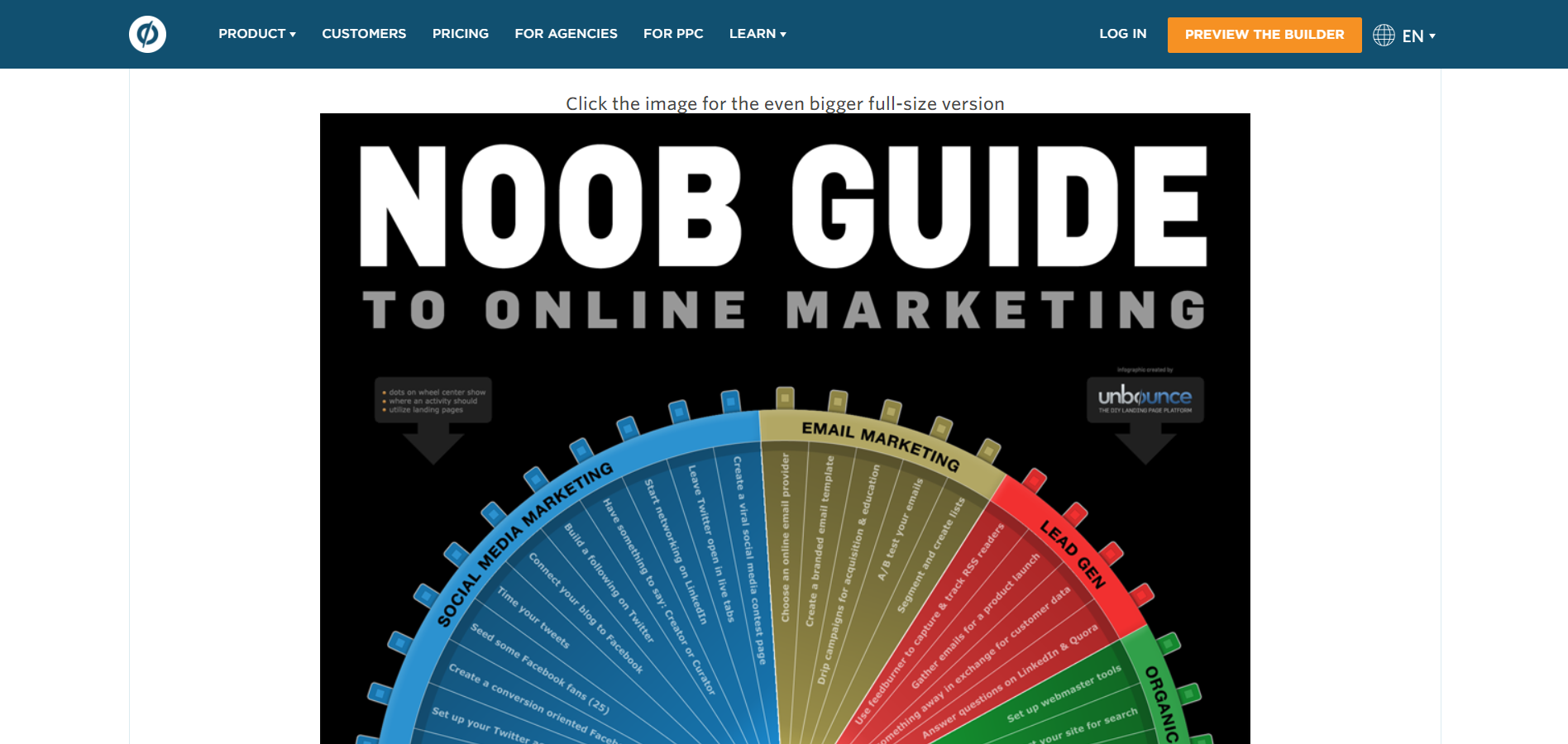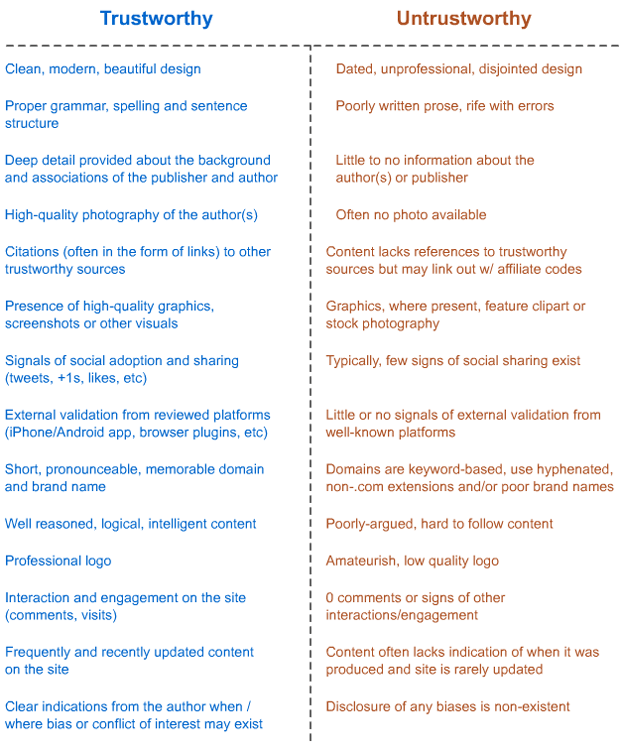Building trust with your audience is an essential component of any content marketing strategy.
When you build trust, you build authority simultaneously. And, when you check off those two elements, you forge connections that lead to long-term, mutually beneficial relationships.
“Mutually beneficial” includes peers, followers, customers, and fans linking to your content. If you provide real value, they will repay you in turn – it’s that simple.
The question is, how do you start building trust and connections in the first place? What should you do off the bat?
Read on.
1. Refocus on Creating Link-Worthy Content
If you want to build links to your site, first concentrate on creating pieces that are link-worthy. This is content people turn to as a known resource for their questions and problems.
It sounds simple, but it’s harder to pull off in practice.
That’s because few people understand what you need to create high-quality, backlink-worthy content.
Consider these questions and you’ll get what I mean:
- What are you going to write about? Have you vetted the topic with research into your audience’s interests, questions, and problems?
- Will you target keywords in the content? Which ones? Have you done keyword research?
- What goals do you want the content to accomplish for your brand?
- Who’s going to write it? Who’s going to edit it? Will you include branded images or infographics?
- Most high-quality content needs research and references to relevant stats. Who’s going to pull those?
- When will you publish?
- How will you promote the post?
Now take these questions and multiply them by the number of posts you want to publish monthly.
That’s a ton of work, planning, scheduling, and strategizing.
However! The sooner you get comfortable with the fact that link-worthy content takes hard work, the sooner you can lay down workflows, processes, and practices to make it easier.

Remember, high-quality content covers all of these areas:
- Audience-relevant
- Well-written and well-researched, with references to trusted sources
- Organized with clear, informative headers
- Showcases originality of thought
- Entertains, educates, informs, or delights the audience
For an example of link-worthy content, look at Oli Gardner of Unbounce. He has written masses of great content to grow their brand.
The best example is a mega-infographic, The Noob Guide to Online Marketing, which clocks in at over 13,000 words and 15 million pixels. This single, massive piece has earned thousands of links and over 150,000 downloads to date.

The sheer mountains of work that go into content pieces like this pay off in spades.
2. Respond, Engage, Interact
Posting incredible content isn’t enough to earn readers’ trust.
If you’re a silent presence that emerges to post blogs, only to retreat into your Fortress of Solitude, you’ll never get anywhere.
Instead, you need to be responsive, present, and engaged online.
- When readers post comments and questions, reply. Be conversational.
- Maintain active social media profiles. (You don’t have to be on every platform – just one or two that make sense for you/your brand.)
- Post comments to others’ content and blogs. Engage in authentic discussions!
- Share/like/retweet posts, and @ people in your network when relevant.
3. Show You’re a Real Person
This point ties into point #2. Showing you’re a real, living-and-breathing human being is essential to trust-building and relationship-forging.
People want to know there’s a heartbeat behind the brands they turn to – not a cluster of greedy, boardroom robots trying to wring every last cent out of their pockets.
Engaging with people online can help you do this, but there are some other ways to showcase your humanness, too:
- On your website, include an about page and a picture of you. People love putting a face to a name.
- In that vein, include a clear picture of yourself on all personal social media profile pages associated with your name. That means a portrait/headshot that’s close enough to show your face. (If you’re using a picture where you’re a minuscule ant against a landscape background, zoom in!)
- Again, maintain your social presence and post regularly. Ghost accounts are a red flag for most people.
Have you noticed a theme, here? Showing you’re human is about staying open, honest, and transparent. If you want to build relationships, online or off, you have to share bits of yourself and remain present.
Rand Fishkin talked about this back in 2011, but what he said then is still relevant today:
“SEO at its core is about great content combined with earning great references. Sharing openly, honestly and adding value with that content is far more likely to produce returns in the form of links, reputation, references and customers than staying closed and secretive.”
Bonus tip: Remember to build relationships offline, too! The more people who know and like you only increases the chances that you’ll earn links naturally. Go to relevant conferences, events, meetups, or anywhere you can start building relationships.
4. Make Sure Markers of Trust Are All Over Your Website
Think about what you look for when you want to find a trusted source online. Those markers are exactly what should be gracing your site if you want that trust for your own brand.
Most of us notice these factors unconsciously during our internet browsing sprees, but they are key to supporting a trustworthy presence online (in addition to great content and an active social presence).
According to Jakob Nielsen, websites communicate trustworthiness in four main areas:

- Design quality – Professional appearance, clear navigation
- Up-front disclosure – Being honest and transparent about anything that affects the customer relationship
- Comprehensive, correct, and current content – Webpages, blog posts, and product pages all fall under this category
- Connection to the rest of the web – Links go out to, and come in from, other websites
For a drilled-down look at the trust elements that can make or break your site, look at this chart from Fishkin’s article mentioned earlier:

5. Link to Other Trusted Sources in Your Content
The final puzzle piece for earning trust?
High-quality links.
It’s the Golden Rule: Do unto others as you would have them do unto you.
That means if you want to build a stellar link profile, link out to other trusted sources in your content.
Aurora Harley, writing for the Nielsen Norman Group blog, has some great insights about why your content and online presence need to be linked to the greater web (both linking out and in):
“An isolated website that does not link to and cannot be found on third-party review sites, social media, or news outlets appears to either have something to hide or not be a fully established, stable company.”
An unconnected, lone website is suspect, in other words. It vouches for no one and no one vouches for it.
Since the internet is all about interconnectivity, it’s no wonder people and Google give sites with no link profile the side-eye.
In particular, linking out to high-quality sources does two things for you:
- It associates you with those sites. If the person who clicks the links in your posts finds those links lead to great information, it speaks well for the value you’re providing.
- It builds your authority. Anyone who reads your posts will be able to see that you know industry sources and have done your research (read: you’re an expert).
The best part about linking out is that it’s easy to do. If nothing else, integrate it with creating link-worthy content.
Trust Online is Earned, Not Grabbed
Perhaps the most important takeaway for successful trust-earning, relationship-building, and link-winning is you can’t rush any of it.
No relationship is built overnight, and you can’t win trust through one interaction. Instead, a user or customer needs to see that you’re true to your word over and over. It’s something that can only happen with time.
When you treat link-building as a long-term game tied to building true connections with your audience, you’ll have a better chance of going further.
Don’t grab for people’s trust – earn it, and the links will follow.
Summary
Timeframe: Ongoing, on a daily/weekly basis
Results detected: 3-month minimum time frame
Average links sent per month: 30-40, depending on the effort put in
Tools needed:
- Skilled content creators (copywriters)
- Your social media profiles (Twitter, Facebook, Instagram, etc.)
- Ahrefs for link-tracking
Benefits of relationship building:
- High-quality sites finding your content and linking to your site acts as a trust factor and a ‘vote’ for your credibility, which ties into higher Google rankings. Ongoing link-building will build DA (domain authority), which builds overall website value.
- Link-building through relationship-building is a long-term, evergreen, “worth-it” process to earn solid, lasting growth and higher rankings for your website. Earning trust and links through relationships is a much more lasting process than overnight, quick link-building tricks.
Image Credits
Featured Image: Paulo Bobita
All screenshots taken by author, May 2019





![AI Overviews: We Reverse-Engineered Them So You Don't Have To [+ What You Need To Do Next]](https://www.searchenginejournal.com/wp-content/uploads/2025/04/sidebar1x-455.png)